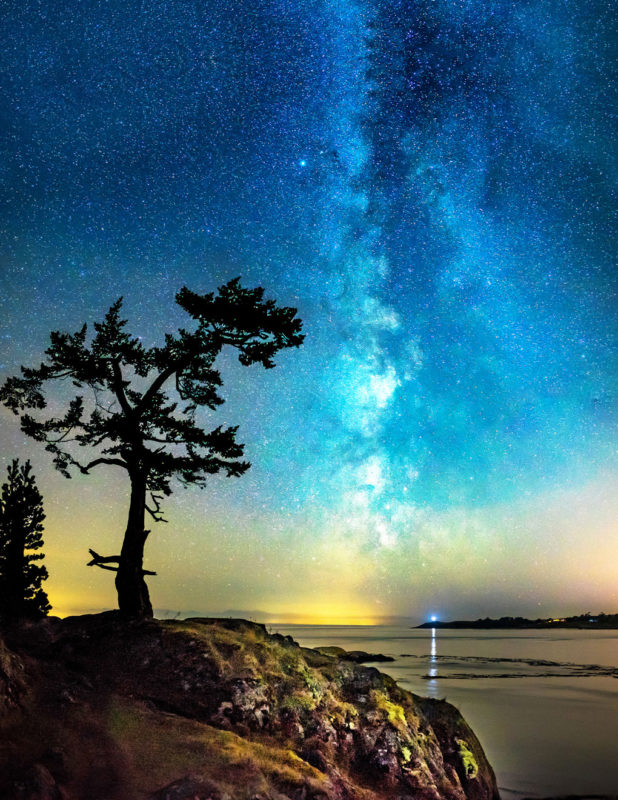By Stephanie Barbé Hammer
“Who decides what is good writing?” I asked my Composition students at Edmonds Community College this past fall.
We traded ideas. In the end, the answer was:
Us. We decide what is good.
That’s exactly right.
Another way of asking this question is “who decides what is beautiful?”
Now there’s a question that has preoccupied writers and philosophers for a couple of thousand years.
But of course, “beautiful” isn’t all the things that art can be. The Anglo-European writers of the 18th Century understood that “beauty” was a possible limitation and embarked on a complex conversation about the difference between the beautiful and the sublime. The sublime, Edmond Burke argued, was scary, awesome, and could be connected to a natural experience, but was also linked to things that were shocking, and even terrifying. Criminals were sublime, as were catastrophes.
Meanwhile, far away from Europe and long before Burke, Kant and Schiller, an imperial court lady named Sei Shonagon was busy writing stream of consciousness in 10th Century Japan. Her writing, which she called zuhitsu, comprised an arresting collection of prose poems, flash nonfiction, and hybrid texts. Gathered into what would be called THE PILLOW BOOK, Sei Shonagon’s writings are weird, funny, sad, sometimes bitchy and always lyrical.
Sei Shonagon’s writing is electrifying. Sometimes it’s beautiful, but sometimes it’s something else.
Sei Shonagon always makes me ask and re-ask the impossible question:
What makes wonderful writing wonderful?
Is good verbal art, writing that is gorgeous and luscious? Or is good verbal art, writing that shocks us, troubles us, makes us deeply uncomfortable?
Shakespeare or Anthony Burgess? Virginia Woolf or Barry Yourgrau? Walt Whitman or Ta-Nehesi Coates? Marge Piercy or Claudia Rankine? Oscar Wilde or …. Angelou, Baudelaire, Steinbeck, Auden or Murakami? Roxane Gay? Margaret Atwood? Lydia Yuknavitch? Leslie Marmon Silko?
Help! This is hard!
Wait — no it isn’t.
The answer is:
Yes, yes, and yes.
The current volume of SHARK REEF runs the gamut. From the poetics of damage and drought to the hypnotic fascination of eating disorders, authors here take the challenge of making art that matters and run with it.
One of the nonfiction writers published here describes – in truncated paragraphs — her train trip from Southern California to Oregon. The trip is filled with longing for the place she can no longer inhabit. An Amtrak voyage can indeed be elegiac. Who knew?
In fiction, two masseuses on a luxury liner gear up to resist the powers that be. Resistance is beautiful indeed, especially these days. In our same issue, but miles away emotionally and stylistically, a foul-mouthed man with a Do Not Resuscitate tattoo sits in a motel room, where he decides upon a surprising reading choice as he attempts to play RISK online.
Some of the writers here are writing realism, some are writing stream of consciousness. Some are working within the recognizable forms of the short story, the memoir, the verse-poem. And others are doing something else – a mixture of things, where we aren’t quite sure whether what we’re reading is poetry or prose or … we’re not sure what.
A poet packs a suitcase for Russia, over and over again. Another walks out onto the street in Beijing and promptly gets lost.
Meanwhile, in Poland a writer tells of a woman’s grandfather who owns a house with a peculiar relationship to the Nazis.
Meanwhile, a dying father and a not-dying daughter play with matches in a remembered kitchen to see what is and is not combustible.
I love it. I love it all. I hope you will too.
Who decides what is good? That’s an ongoing passionate conversation we are all involved in as editors, readers, writers, and thinkers.
We look forward to your feedback. Happy New Year and may the forces of beautiful, sublime, strange, and fascinating writing – in all their incarnations – flow.
Copyright 2019 Hammer
